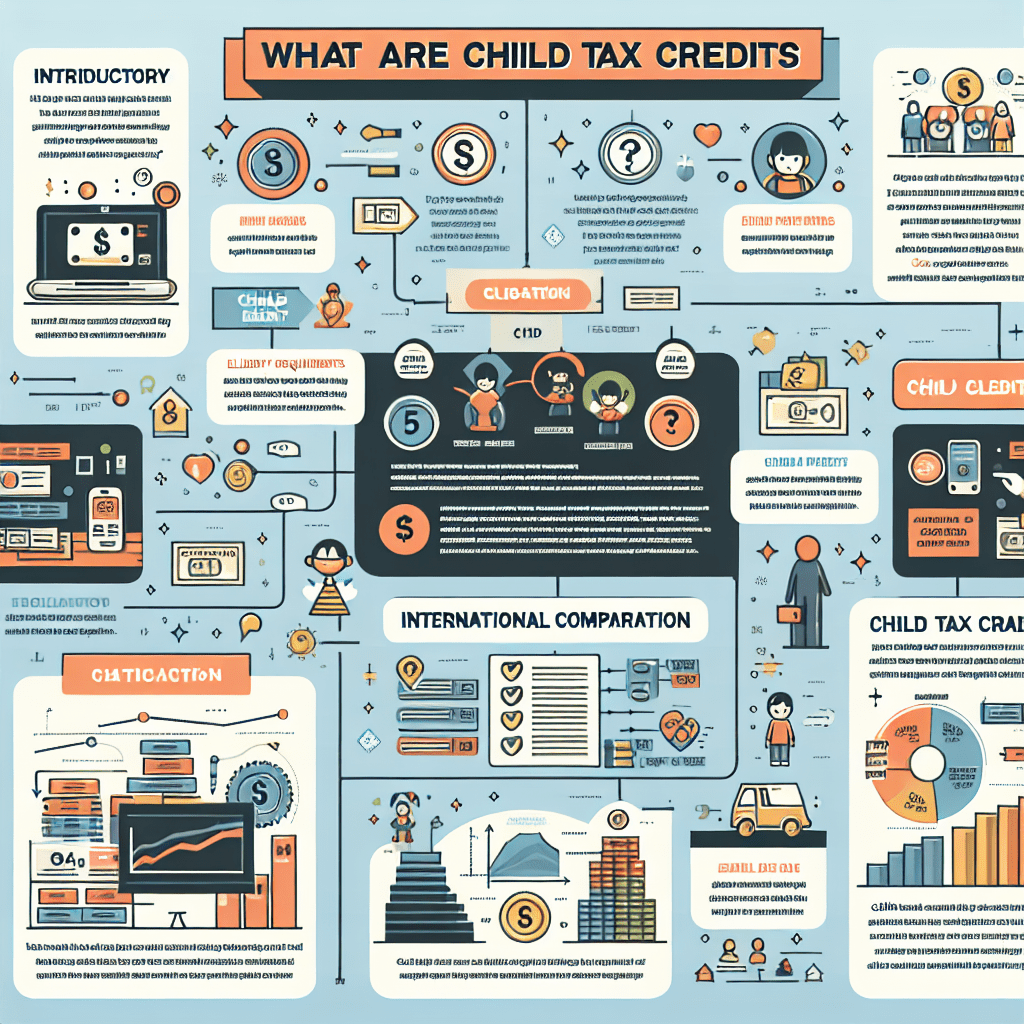## Understanding Child Tax Credits: A Comprehensive Overview
Child tax credits are an integral part of many countries’ tax systems, designed to provide financial relief to families with dependent children. Take a walk through the structured incentives crafted to ease the economic burden of raising children, the eligibility criteria, and the implications they have on society.
Introduction to Child Tax Credits
Child tax credits offer various benefits based on the jurisdiction’s tax legislation. They can significantly reduce taxable income or even contribute as refundable credits to increase tax refunds. Typically, the amount allotted per child is determined by certain conditions—including the child’s age, family income, and tax liabilities. Recognizing that raising a child requires substantive economic outlay, governments worldwide have instituted these credits to offset some of the financial commitments required from parents and guardians.
How Tax Credits Work
The mechanics of child tax credits lie in their ability to reduce a taxpayer’s obligation directly. There’s a difference between deductions, which lower overall taxable income, and credits, which subtract from the total taxes owed, thus more directly beneficial to taxpayers. Refundable tax credits can provide a return that exceeds the amount of taxes paid throughout the year—this essentially means extra income for eligible families.
Eligibility Requirements
Understanding eligibility criteria is essential for claiming child tax credits. These may vary by country or state and usually look at:
– The relationship to the child
– The child’s age (often capped at the end of the teen years)
– Dependence (the child must rely on the adult for more than half of their support)
– Residency length (child must typically live with the claimant for more than half of the fiscal year)
– Citizenship or residency status of the child
– Overall family income
Specific programs might impose further prerequisites or offer additional benefits under certain conditions, like caring for children with disabilities.
Impact on Families and Economy
For families, child tax credits provide critical funds that can support everyday expenses: childcare, education, and other cost-of-living items. This financial supplement can mean higher quality care and opportunities for children, as well as reduced stress for parents balancing budgets.
Economically speaking, boosting families’ purchasing power potentially stimulates consumption and contributes to economic activity. This can have positive cascading effects, invigorating sectors related to childcare and development. By supporting families at these crucial stages, societies also invest in future generations—and healthy economies often correlate with the concomitant improvement in youth education and well-being.
Variations Across Different Jurisdictions
Internationally, there are significant disparities in how child tax credits are implemented. Some countries opt for generous provisions—a reflection of strong family welfare policies—while others might offer minimal assistance. Discovering where one’s region stands requires detailed research into current laws and policies.
Filing for Child Tax Credits
To obtain these credits, eligible taxpayers typically must complete specific forms alongside their tax returns while providing documents substantiating their claims. For optimal benefits and strict compliance with tax laws, understanding filing nuances or consulting with a professional is recommended.
Challenges and Controversies
Though generally applauded for their intention, child tax credits aren’t without contention. Disagreements might center around who should be eligible, funding sources for such initiatives, or debates over whether such benefits discourage work. Furthermore, implementing policies that correctly target those in need without discrepancies proves to be a perpetual challenge.
Future Outlook
Trends may see countries enhancing existing credit schemes or modifying them in response to socioeconomic shifts. Monitoring societal changes linked to demographic trends underscores the dynamic nature of these policies.
Notes
## Image Description
An image detailing an infographic style overview of Child Tax Credits; it includes sections that briefly cover topics such as qhat are child tax credits”, “eligibility requirements”, “application process”, “economic impact”, and “international comparison”. Icons and simple graphics accompany each section for visual aid; color-coding is used to differentiate between sections.
